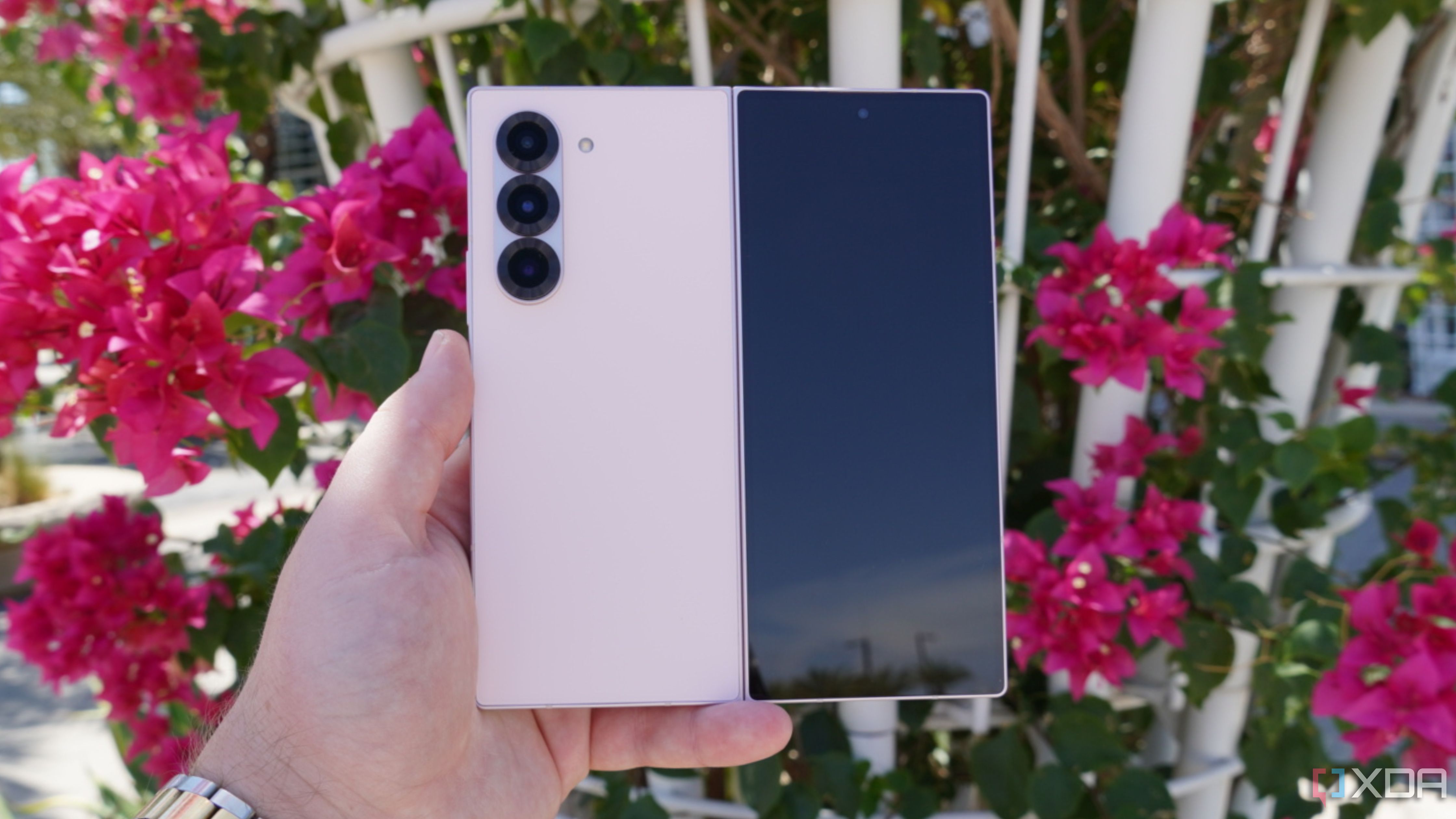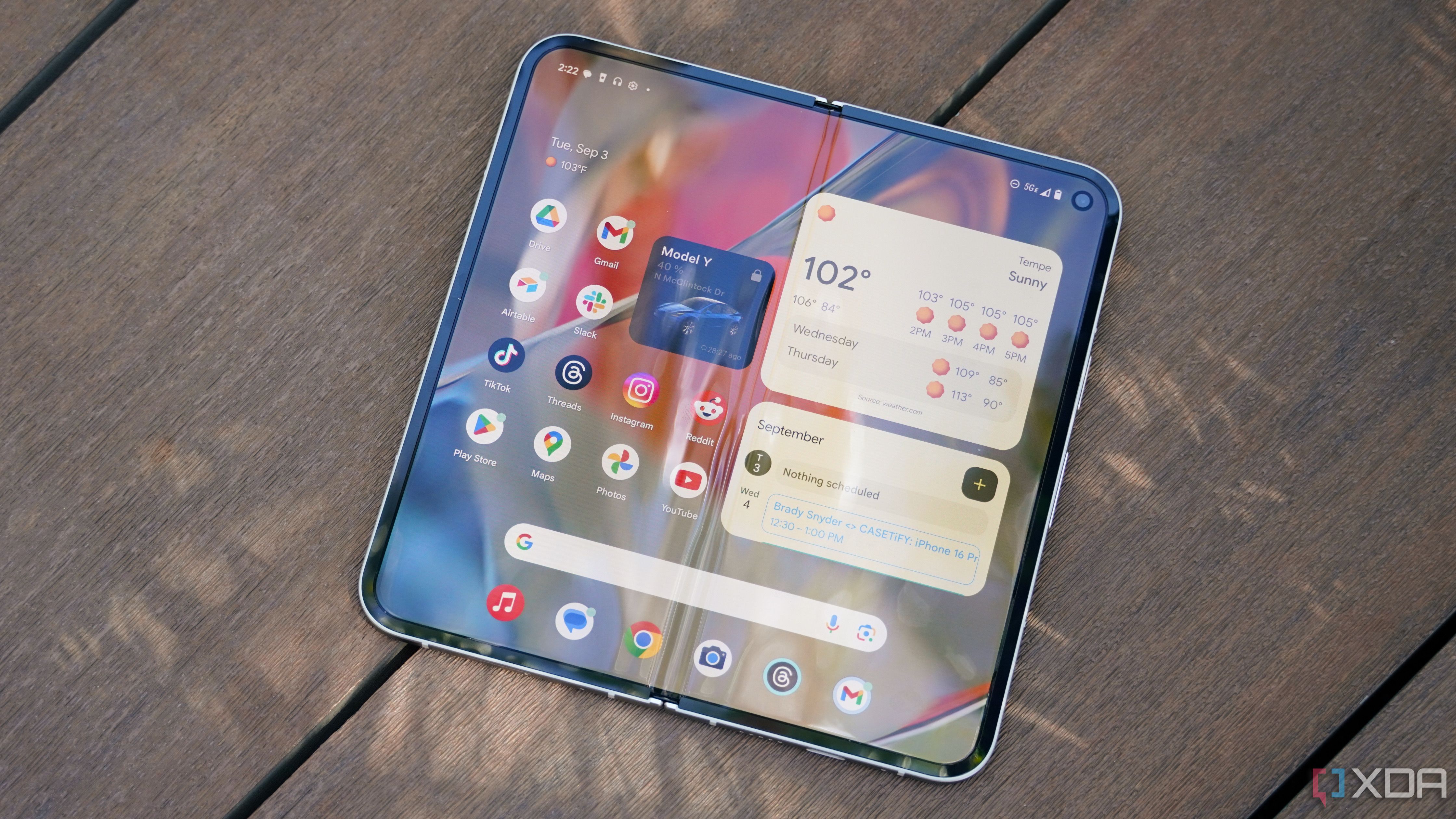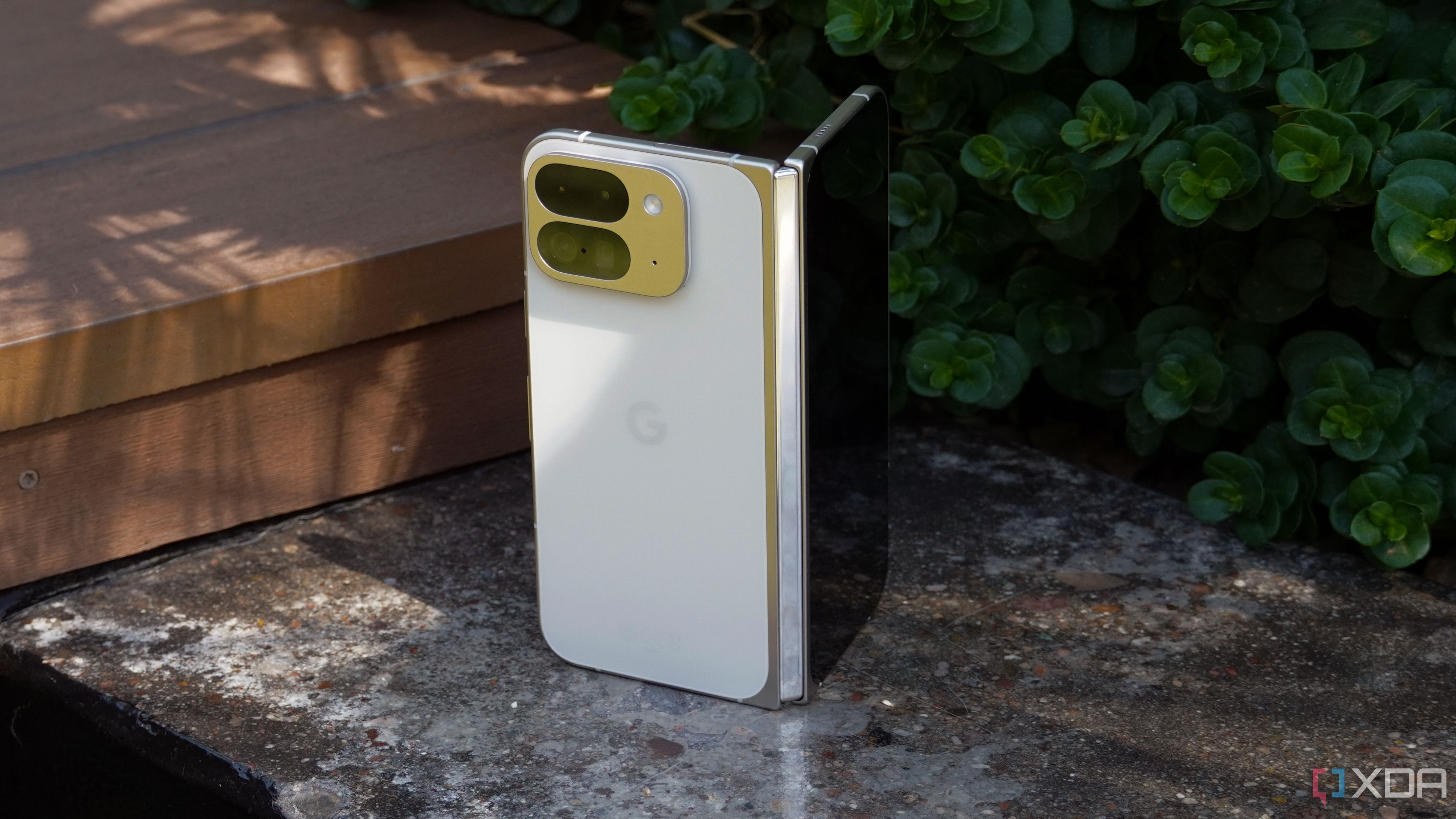The market for folding phones in the U.S. is becoming slightly more competitive, with Google, OnePlus, and Samsung all offering competitive options. Since OnePlus decided against releasing a OnePlus Open 2 this year, you’re choosing between the Google Pixel 9 Pro Fold and the Samsung Galaxy Z Fold 6 if you want a brand-new device. I’ve spent extensive time using both great foldable phones as my daily drivers, and the choice between the two is a simple one. You’re either getting an ambitious, but still immature phone with the Pixel 9 Pro Fold, or a refined one with the Galaxy Z Fold 6.
So, which one would I recommend? It’s a tough decision, but I’d have to choose the Pixel 9 Pro Fold. The form factor, thinness, and camera system are all excellent, and it’s not as heavy as the original Pixel Fold. There are some compromises, but they are compromises I can live with. However, longtime Samsung users wanting the most polished foldable experience will want to grab the Galaxy Z Fold 6. Let’s break down exactly how these two phones compare, and who should buy each one.
-
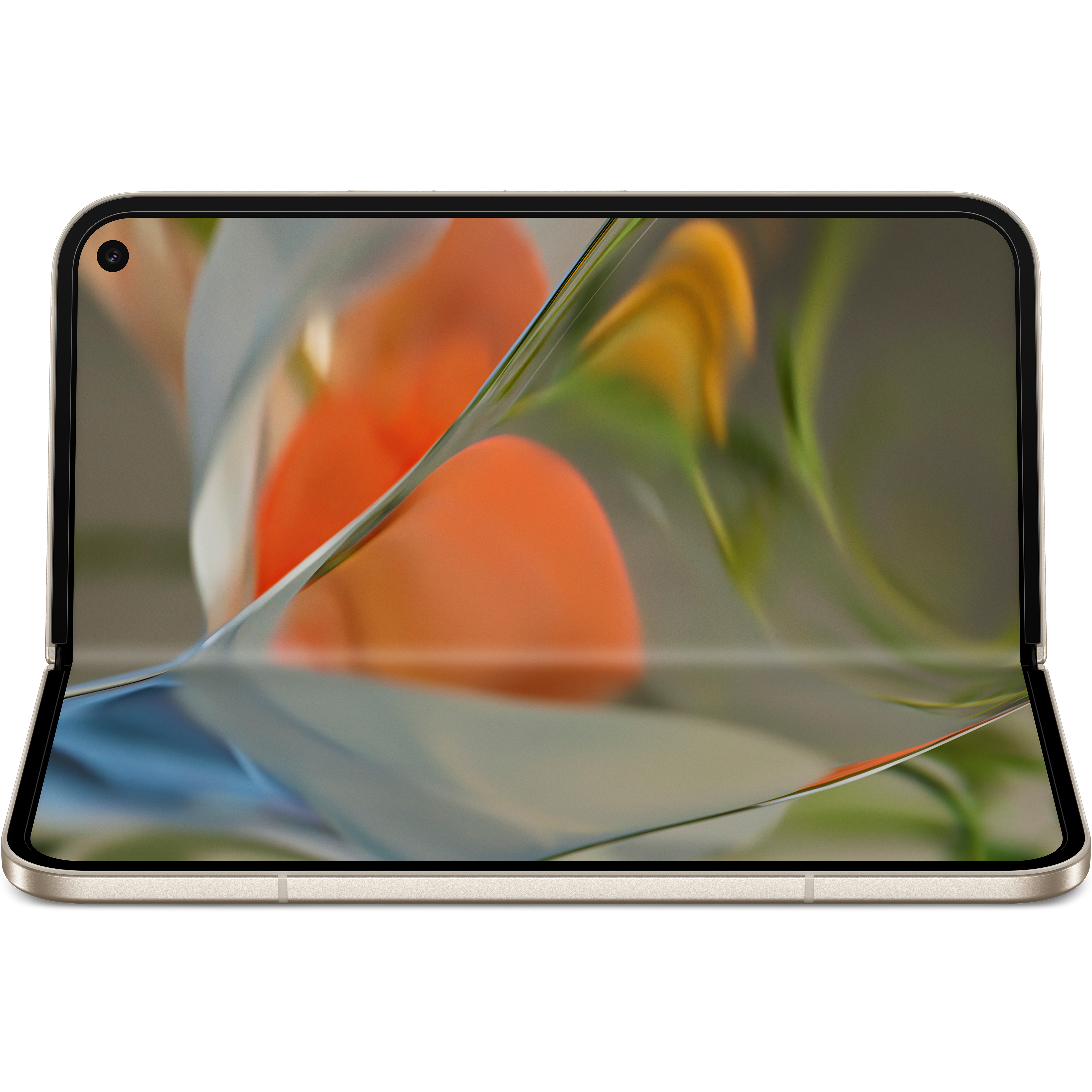
Google Pixel 9 Pro Fold
The Google Pixel 9 Pro Fold feels like a multi-generational leap over the original Pixel Fold. The real question is whether it can compete with the Samsung Galaxy Z Fold 6, which has actually been refined over the course of half a decade. Google still may be behind companies with more experience in the space, like OnePlus and Samsung.
Pros- Nearly as thin as a Pixel 9 Pro
- New form factor takes inspiration from the OnePlus Open
- Pixel launcher and Google-exclusive AI features are great
Cons- Outer display has a low PWM and isn’t an LTPO panel
- Inner display is still quite reflective
-
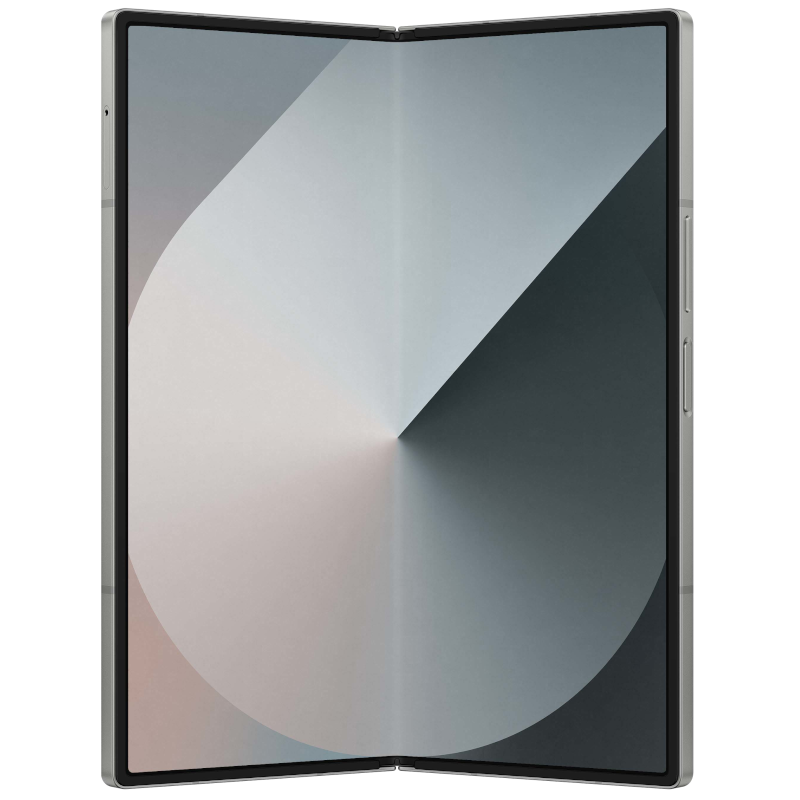
Samsung Galaxy Z Fold 6
$1399 $1899 Save $500
You can tell that Samsung has been producing foldables for a long time, because the Samsung Galaxy Z Fold 6 is still the most polished foldable on the block. This is still a relatively unambitious upgrade. You get a fresh Snapdragon 8 Gen 3 chip, but the cameras are still extremely subpar for the price. And, about that, the price is $100 more this year.
Pros- Snapdragon 8 Gen 3 will beat the Tensor G4 any day
- Build quality and form factor still feels a cut above the Pixel 9 Pro Fold
- Inner screen is way more satisfying to use than Google’s foldable
Cons- Same camera system as the Galaxy S24
- Still thick and heavy
- S Pen sold separately
Pricing, specs, and availability
Google released the new Pixel 9 Pro Fold in August 2024 at a Made by Google event, and it replaces the original Pixel Fold. It’s available for the same $1,800 starting price, and comes in Obsidian or Porcelain colorways. You can choose between either 256GB or 512GB configurations, but unlike the Galaxy Z Fold 6, there is no 1TB version of the Pixel 9 Pro Fold. You can buy it from the Google store, online retailers, and select carriers; notably, it isn’t sold by some carriers, like AT&T.
Samsung launched the Galaxy Z Fold 6 over the summer at a Galaxy Unpacked event. It’s now $100 more expensive, starting at $1,900. You can choose between Navy Blue, Silver, Pink, Crafted Black, and White colorways. The smartphone starts at 256GB of storage and can be configured with up to 1TB of space for an additional fee. You can buy it directly from Samsung, at major online retailers, or from your cellular carrier.
-
Google Pixel 9 Pro Fold Samsung Galaxy Z Fold 6 SoC Google Tensor G4 Qualcomm Snapdragon Gen 3 for Galaxy Display Cover display: 6.3-inch Actua display, OLED, 2424×1080, 120Hz, up to 1800 nits (HDR) and 2700 nits peak brightness, Corning Gorilla Glass Victus 2; Inner display 8-inch Super Actua Flex display, 2076×2152, 1-120Hz, up to 1600 nits (HDR) and 2700 nits peak brightness, Ultra Thin Glass 7.6-inch AMOLED main display, 6.3-inch AMOLED front display, both with 120Hz dynamic refresh rate RAM 16GB 12GB Storage Up to 512GB 256GB, 512GB, 1TB Micro SD card support No No Rear camera 48MP main camera, Quad PD, f/1.7, 82-degree FOV + 10.5MP ultrawide, Dual PD, f/2.2, 127-degree FOV + 10.8MP telephoto, f/3.1 aperture, 5x optical zoom 10MP 3x optical zoom, f/2.4, 12MP ultra-wide, f/2.2, 50MP main camera with autofocus, f/1.8 Front camera Cover screen: 10MP Dual PD, f/2.2, 87-degree FOV; Inner screen: 10MP Dual PD, f/2.2, 87-degree FOV 10MP cover camera, 4MP under-display main screen camera Battery 4,650mAh 4,400 mAh Charge speed 45W wired, wireless charging 25W wired, 15W wireless, Wireless PowerShare Ports USB-C 3.2 USB-C Connectivity Wi-Fi 7, Bluetooth 5.3, 5G (mmWave + sub-6GHz) 5G, 4G LTE, 802.11 a/b/g/n/ac/ax 2.4GHz+5GHz+6GHz Wi-Fi, Bluetooth 5.3, NFC, UWB Dimensions Folded: 6.1×3.0x0.4 inches (155.2×77.1×10.5mm); Unfolded: 6.1×5.9×0.2 inches (155.2×150.2×5.1mm) 153.5 x 68.1 x 12.1mm (folded); 153.5 x 132.6 x 5.6mm (unfolded) Weight 9.1 ounces (257 grams) 239g IP Rating IPX8 IP48 Colors Obsidian, Porcelain Navy Blue, Silver, Pink, Black, White Operating System Android 14 Android 14 / One UI 6.1.1 Price $1,799 $1,900
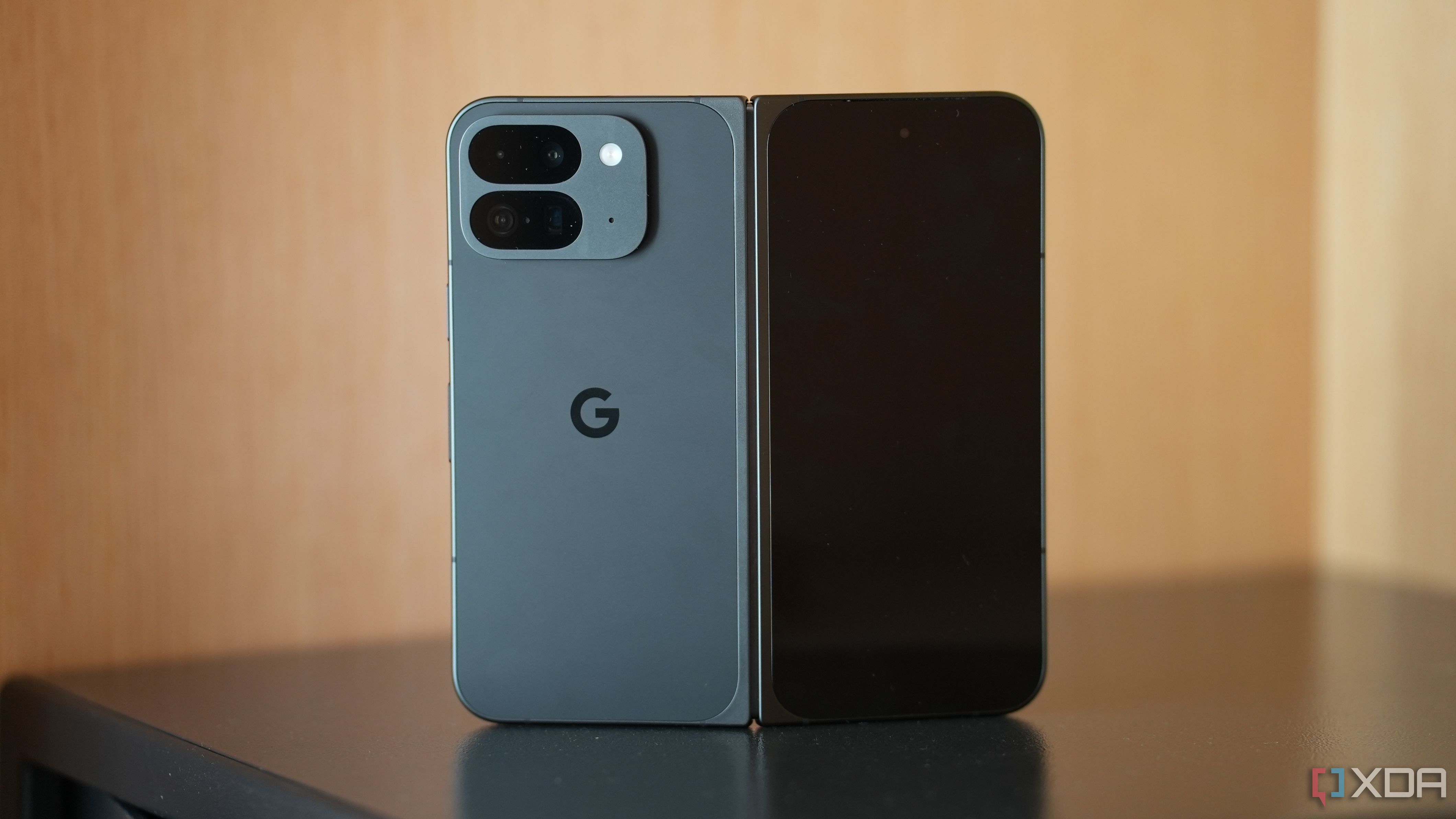
Related
Google Pixel 9 Pro Fold review: So much better than first one, but is that enough?
The Google Pixel 9 Pro Fold is much better than the first Pixel Fold, but I’m not so sure it’s better than existing foldables even within US market
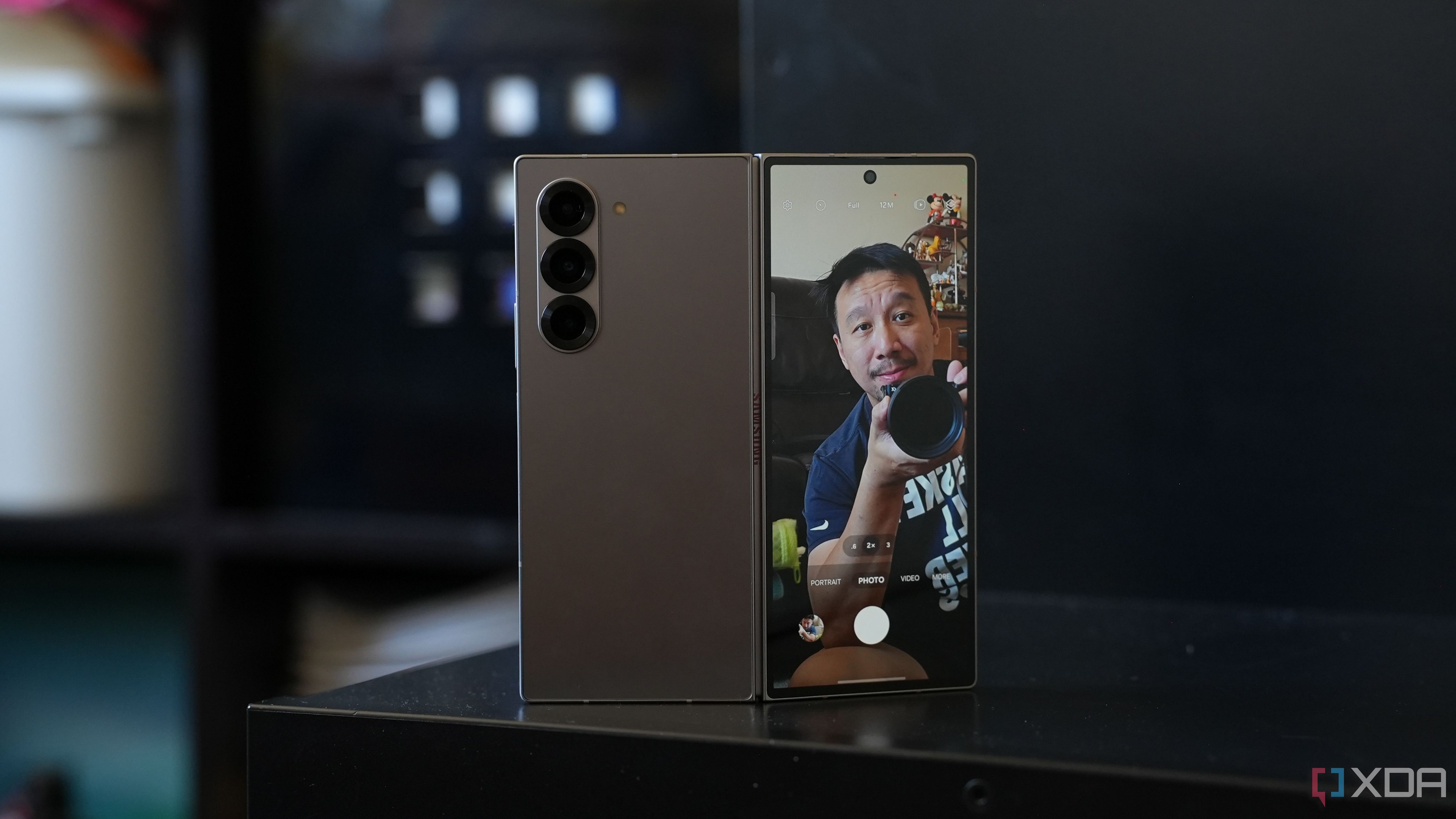
Related
Galaxy Z Fold 6 review: Other Folds are thinner with better cameras, but Samsung’s Fold is most polished
The Fold 6 feels like the final evolution of Samsung’s original 2019 foldable vision: the hardware is refined and polished, but still playing it safe
Design and display
I like the Pixel 9 Pro Fold’s form factor, and the Galaxy Z Fold 6’s hardware
The original Google Pixel Fold and its wide, book-style foldable was fantastic for a while, especially compared to the narrow shape of the Samsung Galaxy Z Fold 4 that I was used to. However, that wore off quickly, especially after I saw the OnePlus Open. Now, the Google Pixel 9 Pro Fold has a normal aspect ratio and cover display that’s eerily similar to the iPhone 15 Pro Max’s footprint. It’s for the best, because the 10.5mm thickness makes Google’s foldable feel like any other flagship phone.
It’s for the best, because the 10.5mm thickness makes Google’s foldable feel like any other flagship phone.
I tend to enjoy the design of the Google Pixel 9 Pro Fold, especially the Porcelain colorway. However, it’s worth noting that the cover screen isn’t very “pro.” The aspect ratio and 6.3-inch size are both perfect for casual use, but the low pulse-width modulation (PWM) and non-LTPO qualities of this OLED panel are underwhelming. Even though it’s 120Hz, you won’t get the variable refresh rate of an LTPO panel. Additionally, a small portion of the population will find the low PWM of the Pixel 9 Pro Fold’s outer screen to cause headaches or become tough to look at.
The main and cover screen on this smartphone are both low-PWM displays at 240Hz. Generally speaking, things start getting good when you open up the Pixel 9 Pro Fold. That 8-inch main screen sports what Google calls a “Super Actua Flex display,” and it supports a 2076×2152 resolution and a 1-120Hz variable refresh rate. Compared to the Galaxy Z Fold 6, I love that the Pixel 9 Pro Fold’s inner screen can go up to 1600 nits (HDR) and 2700 nits (peak) brightness.
It’s only slightly higher than the Galaxy Z Fold 6’s 2,600-nit peak brightness rating, but it makes a big difference in daily use. Unfortunately, the Pixel 9 Pro Fold’s main screen is still quite reflective, and that might negate its brightness advantages.
I do think the Pixel 9 Pro Fold has real advantages in its form factor — the Samsung Galaxy Z Fold 6 is 12. 1mm when folded, and still has a narrow outer screen. However, my Pixel 9 Pro Fold review unit already makes a squishing sound when I open and close the hinge. After a year of use, my Pixel Fold doesn’t come close to opening completely flat. The Pixel 9 Pro Fold already has a gnarly scratch on its main screen. Build quality and long-term durability are still two major concerns you need to think about when buying a Google foldable.
For what it’s worth, many of my biggest complaints about the Pixel 9 Pro Fold aren’t shared by the Galaxy Z Fold 6. The latter has a high PWM and a variable refresh rate on both screens, and Samsung makes the sturdiest hinge in the industry. I didn’t notice any durability issues in my months-long testing period. More importantly, the Galaxy Z Fold 4 I’ve had for more than two years is still holding up nicely. It’s clear that if you care about hardware polish, reliability, and durability, you need to buy the Galaxy Z Fold 6.
Performance and software
The Samsung Galaxy Z Fold 6 is faster, but you probably won’t notice
Performance and software is another mixed bag; I’d argue the Pixel has better software, but the Galaxy’s software helps you be more productive. Let me explain. I find the Pixel Launcher to be a generally more appealing, easier-to-use operating system than the bloated mess that One UI can be these days. Now that the Pixel 9 Pro Fold can use Android 15, the experience is even better. You can pin the taskbar to the bottom of the main screen and save app pairs to your home screen for quicker multitasking.
The simple truth, though, is that the OnePlus Open and Samsung Galaxy Z Fold 6 still crush the Pixel 9 Pro Fold in terms of multitasking and productivity. Specifically, the Galaxy Z Fold 6 can fit more on the same screen with pop-up views and split-screen views. Meanwhile, the Pixel 9 Pro Fold still has no way to open an app in pop-up view. It’s simply not part of Google’s Android skin for Pixels, and it limits how you can use the Pixel 9 Pro Fold’s 8-inch inner display.
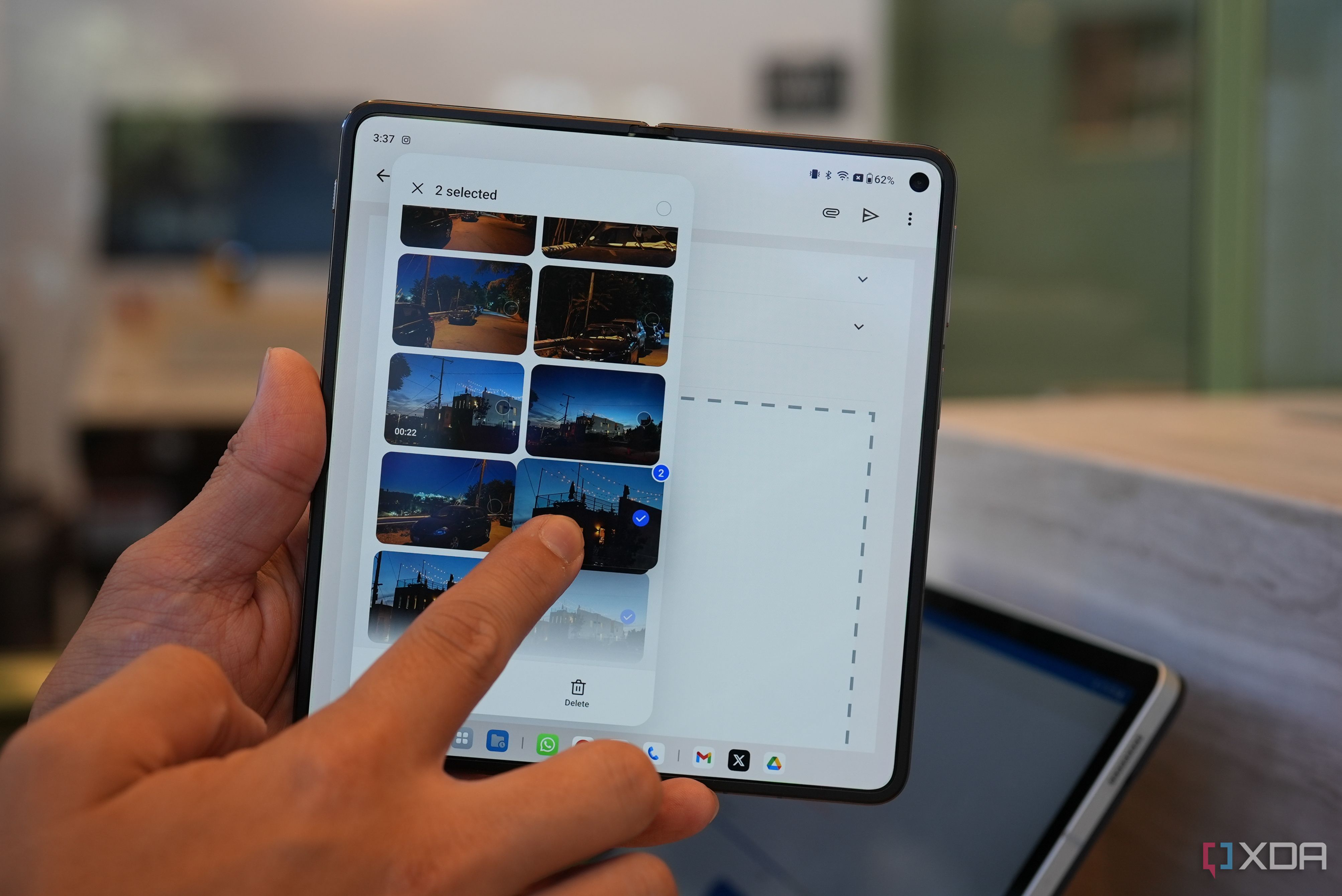
Related
The OnePlus Open has the best multitasking system I’ve ever used on any phone or tablet
Open Canvas, as OnePlus calls it, is the most dynamic and intuitive multitasking system I’ve used, and I want it on all my other computing devices
I think people like to dunk on Google’s Tensor systems-on-a-chip, and they’re usually just fine for midrangers and typical flagships. It gets tricky when Google puts the same Tensor G4 processor in the Pixel 9 Pro Fold as the one that will likely appear in the rumored Pixel 9a next year. The truth of the matter is that yes, the Tensor G4 in the Pixel 9 Pro Fold is slower than the Snapdragon 8 Gen 3 for Galaxy in the Galaxy Z Fold 6. You might notice it in certain use cases, notably gaming. Overall, power users may run into hardware and software limits while trying to use a Pixel 9 Pro Fold for productivity and multitasking. If you’re one of the five people who use DeX, you’ll notice the absence of that on the Pixel, too.
Both phones come with plenty of AI features, and are promised to be supported for seven years. Despite the apparent downsides of using the Pixel 9 Pro Fold, I can’t help but want to keep using it. Pixel Launcher is simply a more pleasant Android experience than One UI, and I find myself using split-screen view most for multitasking — which the Pixel 9 Pro Fold handles perfectly.
Cameras
Neither is a winner, but the Galaxy Z Fold 6 is a loser
There isn’t a single foldable phone available in North America with an outstanding camera system. But of the available options, the Pixel 9 Pro Fold has the best camera. It starts with the 48MP, f/1.7 main camera, which is a Quad PD lens that can capture a lot of light and take great photos during the daytime. Crucially, the Pixel 9 Pro Fold has a telephoto camera capable of 5x optical zoom that puts the Galaxy Z Fold 6 to shame. Additionally, you get a 10.5MP ultrawide lens and two front-facing cameras (one for each display).
I took the following photos with a Google Pixel 9 Pro Fold:
Again, the Pixel 9 Pro Fold’s camera system won’t beat any of the best camera phones out there. It’s still a second-rate camera system. With that being said, Samsung’s laziness has caused it to lose ground in the foldable race. The Galaxy Z Fold 6 has the same camera system as the Galaxy S24, which has the same camera system as the Galaxy S22. You’re paying $1,900 for a phone and getting the same cameras that shipped on an $800 phone — nearly three years ago.
Which foldable should you buy?
I’ve used the Pixel 9 Pro Fold since it released in September, and the Galaxy Z Fold 6 for months more. These are two flawed phones, and it’s tough to pay nearly $2,000 for devices with glaring issues. Still, I’ve kept finding reasons to put the Pixel 9 Pro Fold in my pocket. It’s kind of like a OnePlus Open with Pixel hardware and software, and there are many good things about that. This is a multi-generational leap for Google, and people waiting for the Pixel Fold to mature will enjoy the Pixel 9 Pro Fold.

Editor’s choice
Google Pixel 9 Pro Fold
With all-new screens, the Pixel 9 Pro Fold is automatically a huge upgrade over the original Pixel Fold. It also comes with a more powerful Google Tensor G4 chip and new features that make use of the dual screens.
Those put off by the build quality and durability concerns associated with the Pixel 9 Pro Fold might want to grab the Galaxy Z Fold 6 instead. The phone’s superior processor and multitasking software are two more reasons to go with Samsung’s foldable. It’s still incredibly difficult to pay Samsung more for the same old cameras, and I just can’t do it personally.

For power users
Samsung Galaxy Z Fold 6
$1399 $1899 Save $500
The Galaxy Z Fold 6 further refines Samsung’s foldable smartphone design, packing a powerful Snapdragon 8 Gen 3 chip and a slick dual-screen Android interface. It’s not the best in all categories, but it’s arguably the most polished foldable smartphone on the market.


